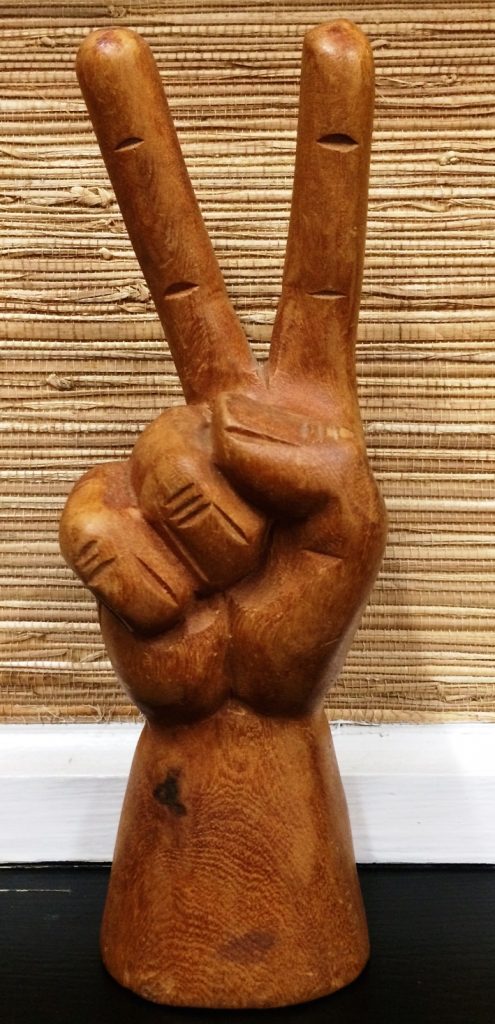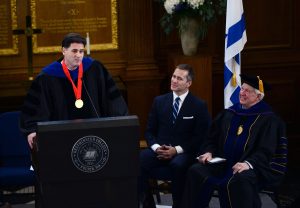
Bulletin #118 – Apr 2018
Churchilliana

April 15, 2018
By BRIAN KRAPF
This month’s Churchilliana features one of the most famous symbols of the Second World War. The V for Victory is closely identified with Winston Churchill. During the war, it was not uncommon for him to flash the V sign. The symbol soon found its way onto buttons, posters, and other wartime homefront propaganda. Today it survives as an immediately recognized symbol of Churchill and the war.
Wooden hands, such as the one pictured here, were made by soldiers while recovering in British hospitals from their wounds. During the war, as part of their convalescence, soldiers were provided art projects such as this hand to complete. Such items would then be sold to the public in exchange for donations to various benevolent funds. There were many such wartime funds established to provide assistance not only to recovering soldiers, but to the families of soldiers who had made the ultimate sacrifice for King and Country. Other similar projects intended to raise money for various benevolent funds included the making of bells and ashtrays from the wreckage of downed German planes.
It should be noted that similar schemes were utilized during the Great War. Convalescing soldiers—particularly officers recovering in the Lord Roberts facilities—produced many homefront items intended for fundraising, including wooden caricature busts of Prime Minister Asquith and Churchill as First Lord of the Admiralty. Likewise, the remnants of downed Zeppelins were crafted into saleable fundraising items.
It is interesting to note how the V for Victory symbol originated and gained such widespread use and visibility. On 14 January 1941, Victor de Laveleye, former Belgian Minister of Justice and director of the BBC’s Belgian French-language broadcasts, suggested during a broadcast that Belgians use a V for victoire as a rallying emblem. In this broadcast, de Laveleye commented “the occupier, by seeing this sign, always the same, infinitely repeated, [would] understand that he is surrounded, encircled by an immense crowd of citizens eagerly awaiting his first moment of weakness, watching for his first failure.” Shortly thereafter, V’s began appearing on walls throughout Belgium, the Netherlands, and Northern France.

2024 International Churchill Conference
Upon recognizing the success and impact of de Laveleye’s broadcast, BBC broadcasts began with the opening bars of Beethoven’s Fifth, the four repeated notes (three short and one long) coincided with the audible Morse Code for “V.” By July 1941, the emblematic use of the letter V had spread through occupied Europe. On 19 July, Churchill referred approvingly to the V for Victory campaign in a speech and himself regularly began making the V by hand. The rest, as they say, is history.
It is interesting to note that the Germans, seeing the success of the V campaign, adopted it for use themselves. Their V included laurel leaves underneath as a distinguishing feature.
Brian Krapf formerly served as President of the American Political Items Collectors.
Subscribe
WANT MORE?
Get the Churchill Bulletin delivered to your inbox once a month.




